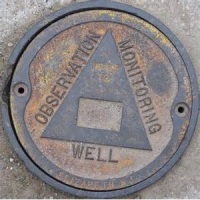Protecting your thermal scheme from FTS disaster
 While every operator wants to produce oil to surface, no one wants to see flows to surface outside of a well bore. Flow to surface (FTS) in thermal schemes has attracted attention recently by the AER.
While every operator wants to produce oil to surface, no one wants to see flows to surface outside of a well bore. Flow to surface (FTS) in thermal schemes has attracted attention recently by the AER.
One operator proposed carefully increasing operating pressure in some areas of his thermal scheme. He proposed several mitigation strategies including surveillance wells. This use of observation wells is starting to grow in the industry. You can get his application documents within moments through our self-serve, secure checkout.
Buy these submission docs now Subscribers get them for free?subject=Help me get up to speed on thermal surveillance wells&body=Help me get up to speed on thermal surveillance wells. Show me different operator's opinions from their applications.%0D%0A%0D%0AMy Name:__________ %0D%0AMy Phone Number:__________ %0D%0A%0D%0A(Or call Proven Sales at 403-803-2500.)">Contact Proven for recent developments. We stay on top of thermal recovery strategies.
Field wide maximum operating pressure (MOP) regulations try to protect against such flows in thermal schemes. But some operators are also using surveillance methods to ensure that there is no breaches in caprock strata.
Rather than using observation wells to watch pressure in the exploited zone, operators are starting to watch conditions in uphole zones. In these zones they hope to see no change but they are monitoring them anyway. They hold this out as positive proof that there are no leaks in the caprock integrity.
Surveillance methods include monitoring pressure in the uphole zones. Some operators also measure temperature and seismic events in formations above the caprock.
If you were watching all thermal applications you would have seen this operator's application months ago. AppIntel offers area alerts -- you get new applications delivered to your inbox.
?subject=Let me try a few area alerts. Cheap and cheery.&body=Sign me up for a few area alerts from AppIntel so I can try them out.%0D%0A%0D%0AMy Name: __%0D%0AMy Phone Number: ___%0D%0A%0D%0ASend me email alerts centered around UWI __%0D%0AWithin this many miles __%0D%0AType of applications __%0D%0A%0D%0AFor pricing, see: https://www1.appintel.info/just-alerts/%0D%0A%0D%0A(Or call AppIntel Sales at 403 803 2500)">Contact us to find out how.
Tags: Thermal, Heavy Oil
 Granger Low 20 Sep 2016
Granger Low 20 Sep 2016

Steam surfactant co-injection
Want to win? What is your competitive advantage?

Surprise! Sour gas production from a sweet thermal scheme
Dealing with surprises in the oil and gas industry. What to do next.

10 ways to increase production before Christmas - Infographic
For your wall to remind you

10 ways to increase production before Christmas
Each cost less than half a million

Using AI to reduce risk of oil and gas failure
How can you assess the risk without knowing the epic fails?

Artificial intelligence using vetted oil and gas information
Using anything else is dangerous




 Calgary, Alberta, Canada
Calgary, Alberta, Canada
 Share
Share